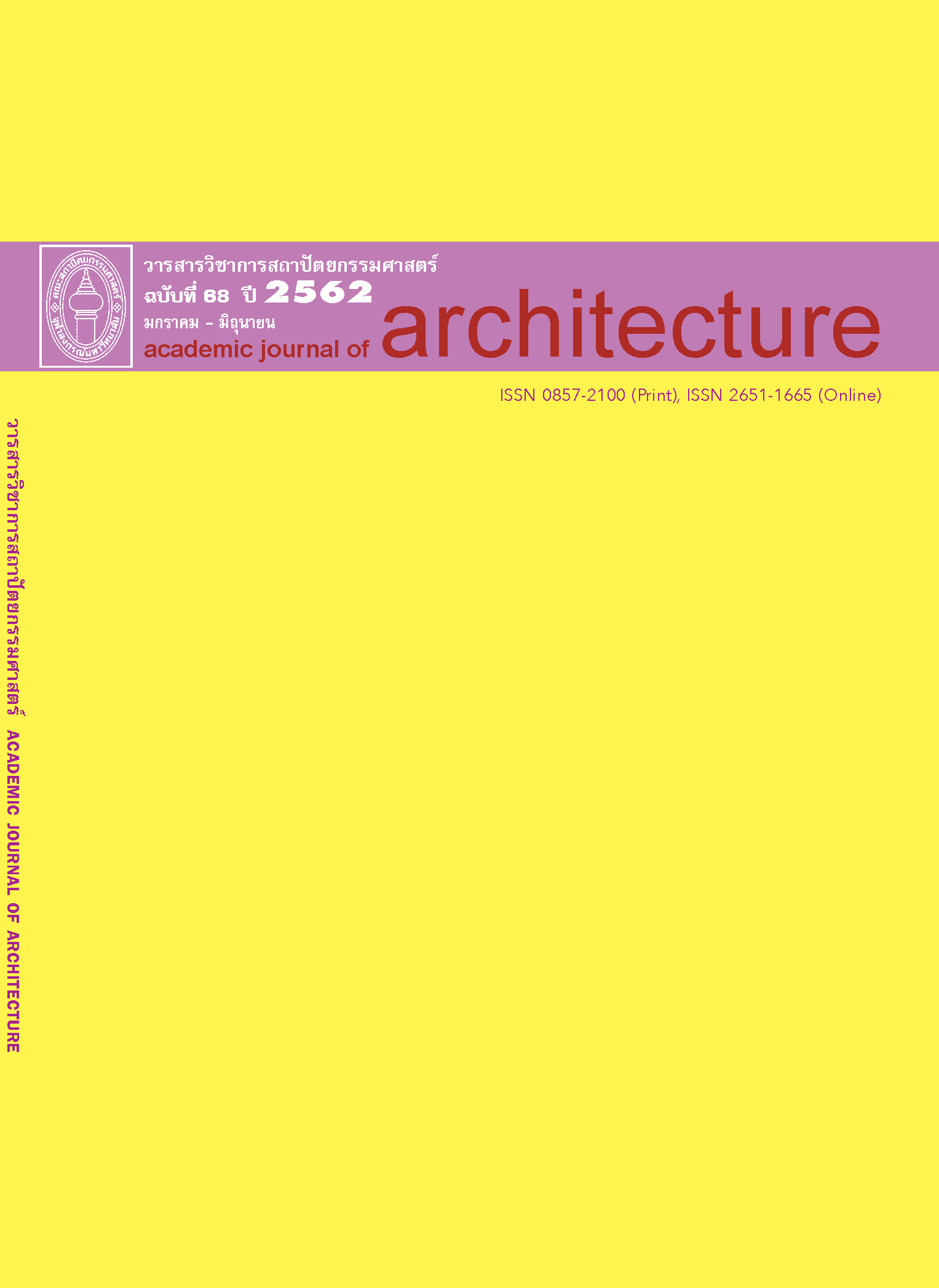Physical Characteristics of Recurrent Fungus Areas in Air-Conditioned Hospitals
Main Article Content
Abstract
The occurrence of fungus from damp in healthcare facilities is harmful to both patients and healthcare staffs. In a hospital, a place that has specific standards and needs in controlling indoor environments, fungus should not be found. This research was empirical research conducted to examine the physical characteristics of recurrent fungus areas in air-conditioned hospitals and causes which relate to the occurrence of fungus in these locations. The study covered collecting data and pictures, interviewing the authorized staffs in actual areas, including the usage of physical parameters and hospital documents to see the pattern and common characteristics of the studied fungus areas in order to identify the causal factors concerned. The research showed that some characteristics of the studied areas are relevant to the types and the functions of the area, including the appearance of the fungus in the area. The temperature, relative humidity and surface materials of areas with the occurrence of fungus are factors that relate to the occurrence of fungus in healthcare facilities.
Article Details
References
บุษยา จูงามและพลกฤต กฤชไมตรี. “การศึกษาปรับปรุงวิธีการควบคุมความชื้น เพื่อลดปัญหาการเกิดเชื้อราในหอพักผู้ป่วย.” วิศวกรรมสาร มก. 82 (2555).
พัลลพ ตันแก้ว, ผาณิตา โกมลมาลย์, จงกล ใจมูลวงศ์, เพราพิลาศ อินตะยศ, บงกชวรรณ สุตะพาหะ. “การสำรวจหาจุลชีพในบรรยากาศห้องผ่าตัดของโรงพยาบาล ห้องเรียน และห้องประชุมของสถานศึกษา เปรียบเทียบระหว่างการใช้เครื่องดักจับเชื้อกับวิธีวางจานอาหารเลี้ยงเชื้อ.” วารสารเทคนิคการแพทย์เชียงใหม่. 42, 1 (2552). 25-36.
สุพจน์ เตชะอำนวยวิทย์. การตรวจวัดคุณภาพอากาศในอาคาร. กรุงเทพฯ: สมาคมวิศวกรรมปรับอากาศแห่งประเทศไทย, 2551.
สุวัฒน์ ดำนิล. “การสำรวจระดับความเข้มข้นและการจำแนกชนิดของแบคทีเรียและเชื้อราในอากาศภายในอาคารของโรงพยาบาลศิริราช.” วิทยานิพนธ์วิทยาศาสตรมหาบัณฑิต สาขาวิชาอาชีวอนามัยและความปลอดภัย คณะสาธารณสุขศาสตร์ มหาวิทยาลัยมหิดล, 2552.
ASHRAE. ASHRAE Position Document on Limiting Indoor Mold and Dampness in Buildings. Georgia: ASHRAE, 2012.
ASHRAE. Control Design Guide Harriman. Atlanta, GA: Brundrett & Kittler, 2001.
Block, S.S. “Humidity Requirements for Mold Growth.” Applied Micribiology 1 (1953): 287-293.
Chuaybamroong, P., Choomseer, P. and Sribenjalux, P. “Comparison between Hospital Single Air Unit and Central Air Unit for Ventilation Performances and Airborne Microbes.” Aerosol and Air Quality Research 8 (2008): 28-36.
Frazier, w.c. Food Microbiology. New York: McGraw-Hill, 1958.


